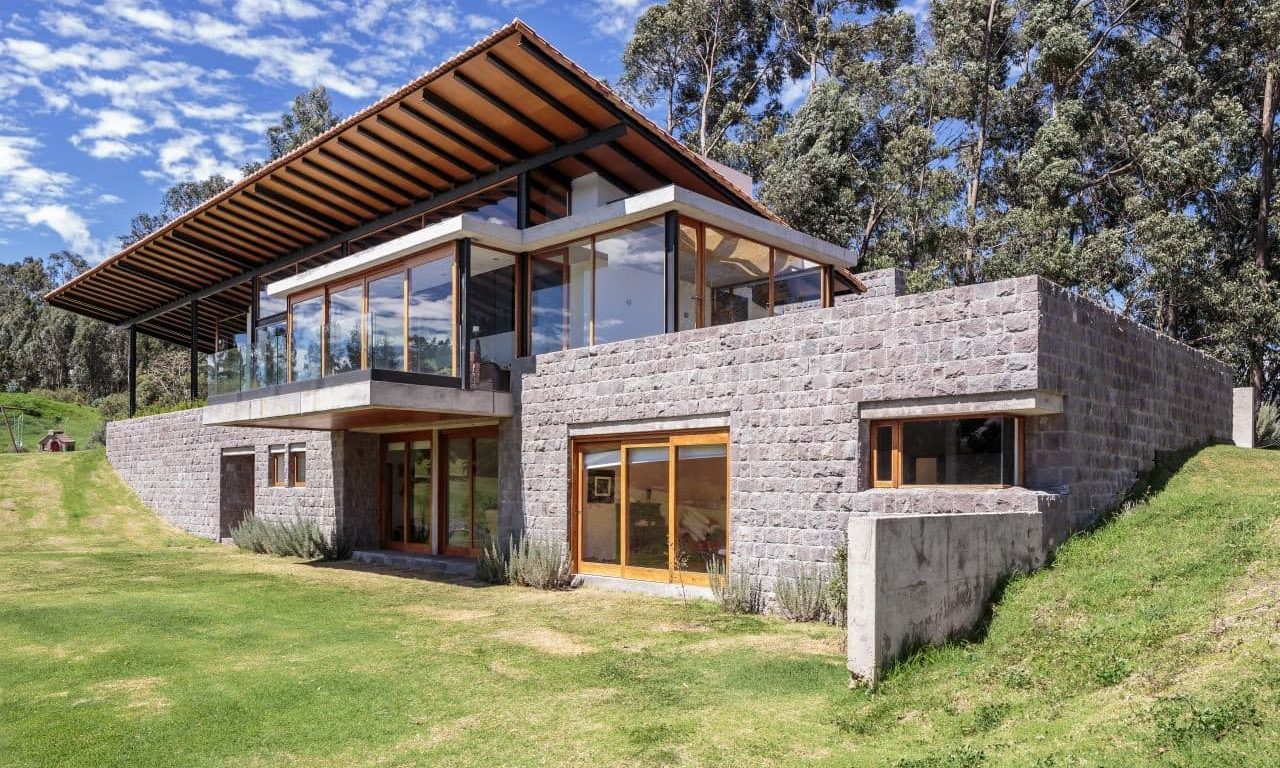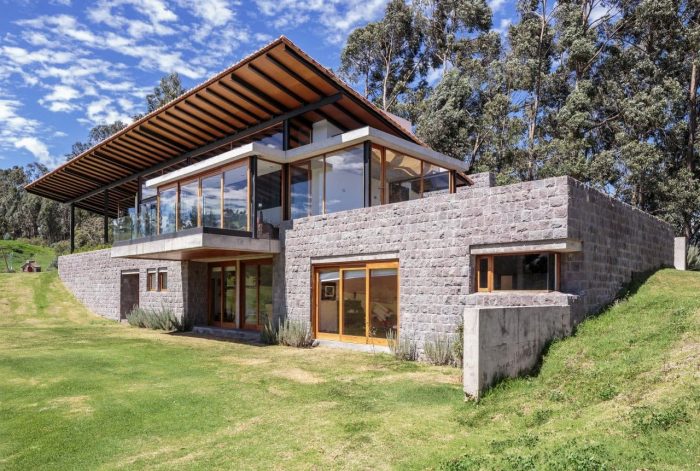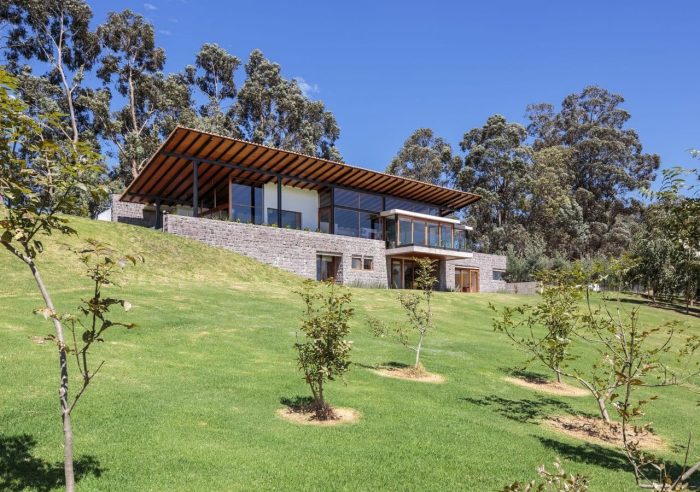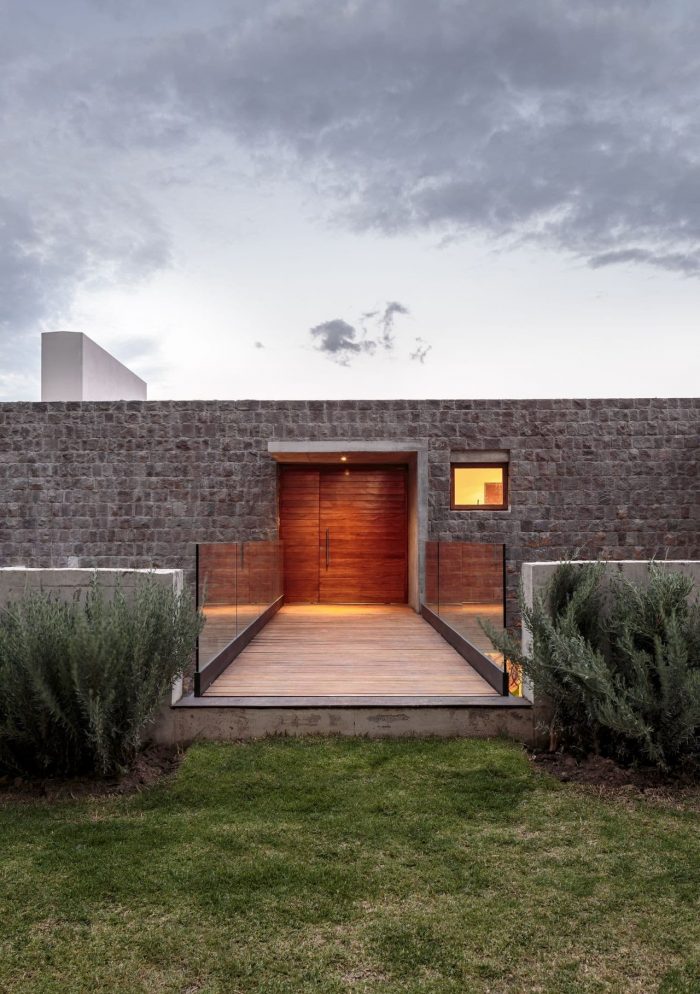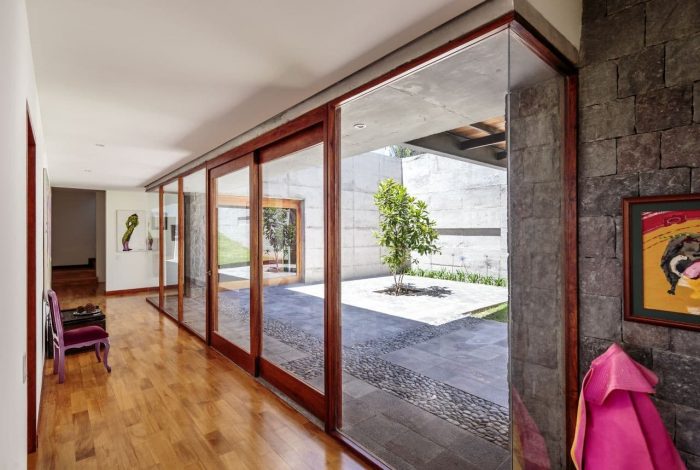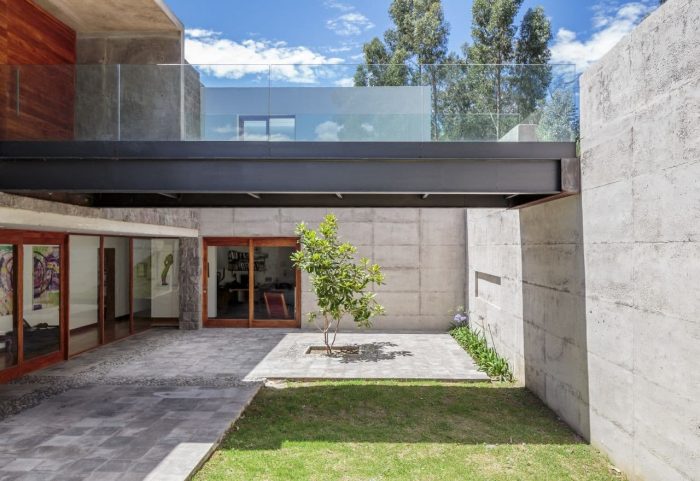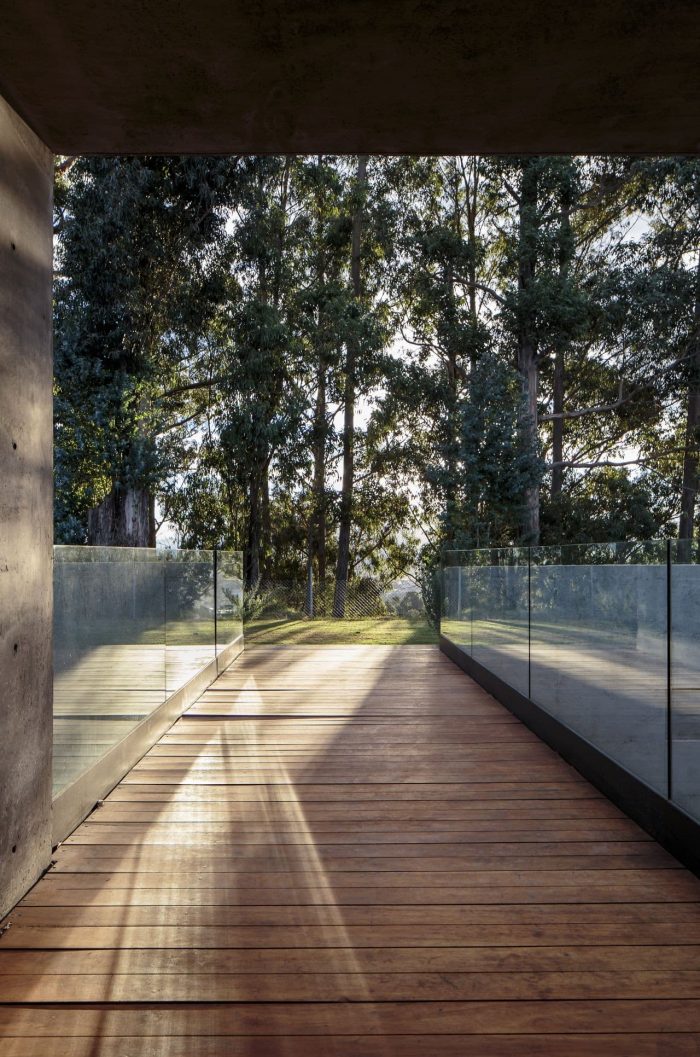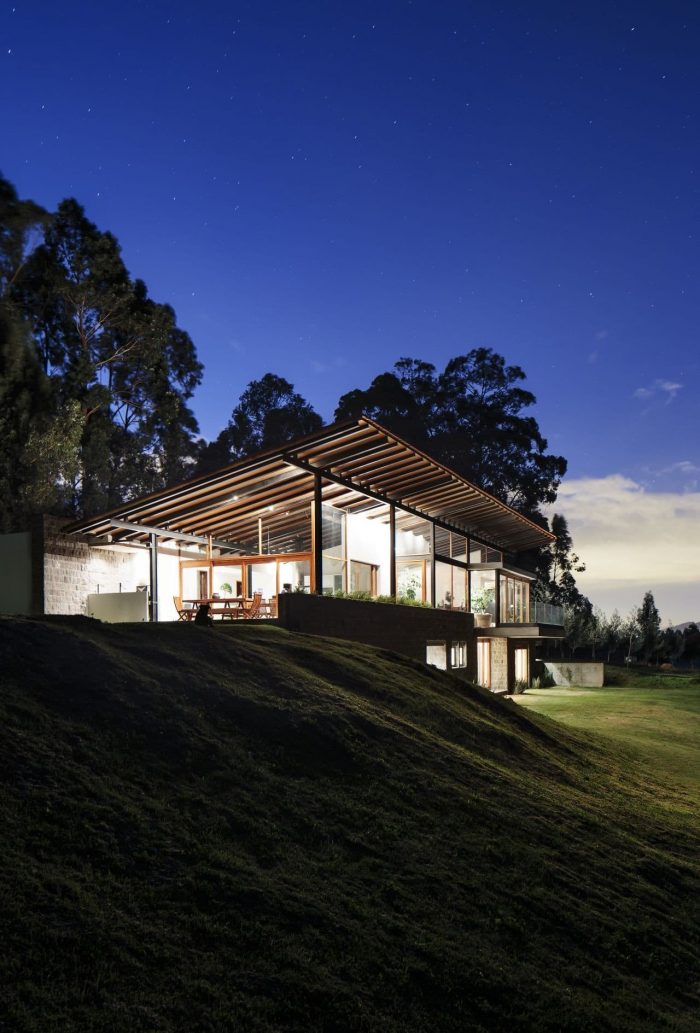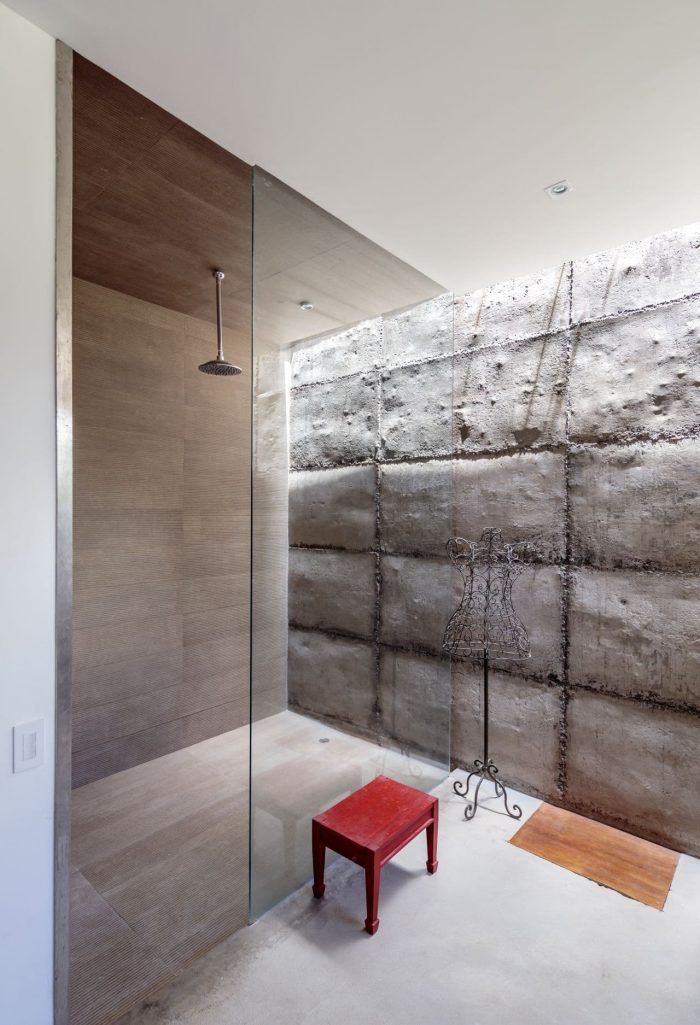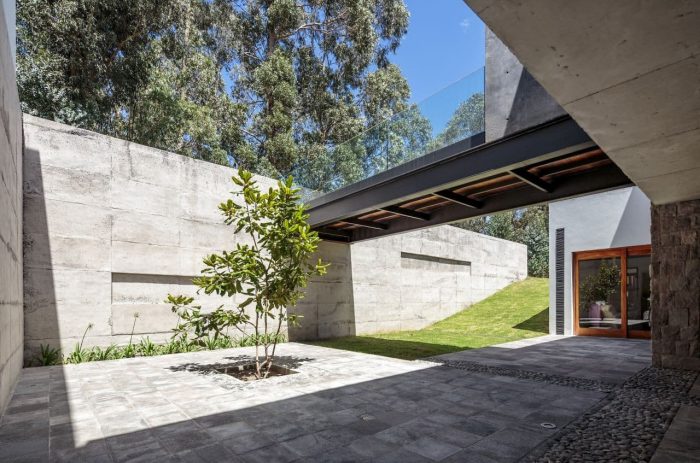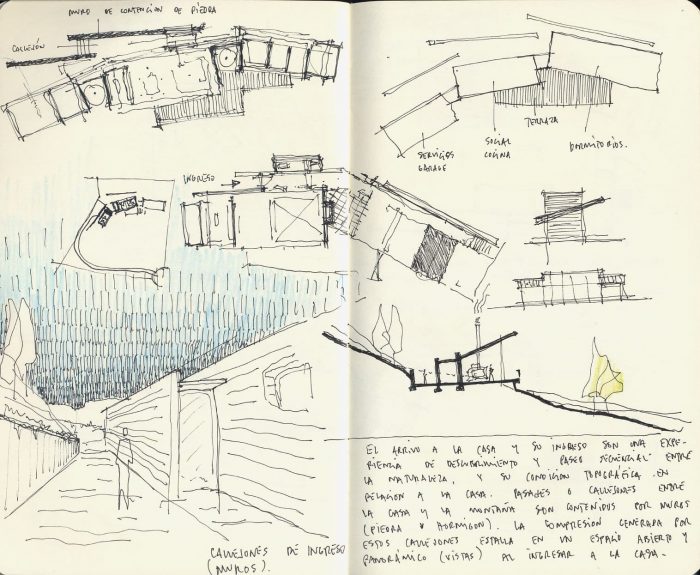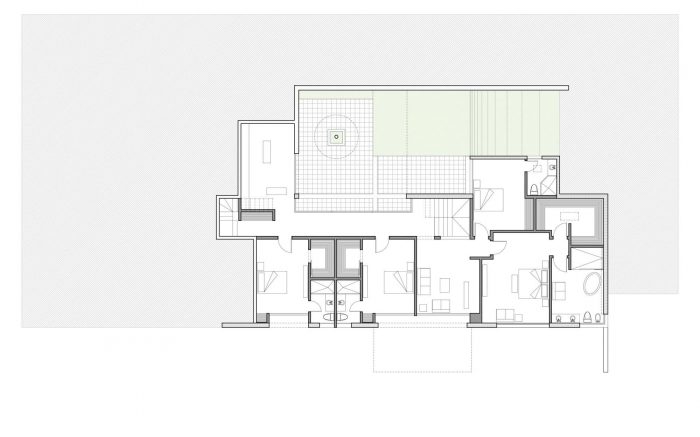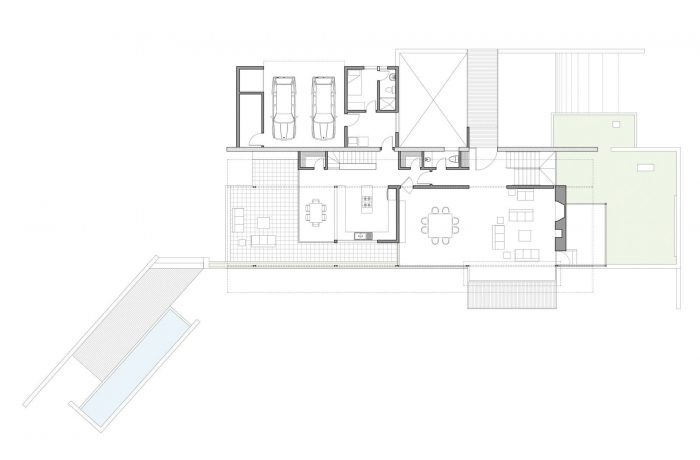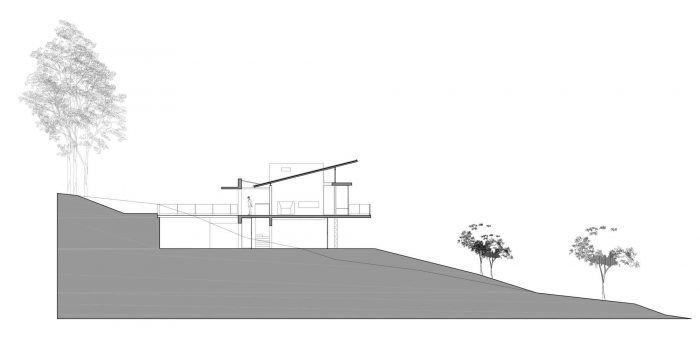这个房子的设计源于以前对厄瓜多尔高原地区建筑的研究和理解,以及如何通过理解各自的地点、构造和空间来与现代系统接触,在两个系统之间创造一种张力。
The design of this house arises from previous research and understanding of the regional architecture of the Ecuadorian highlands, and how it engages with a modern system through understanding the place, tectonics and space of each, creating a tension between the two systems.
首先是传统的建筑和空间元素,如院子、墙、门廊和斜坡。同时,开放的计划和连续的空间是现代主义的概念,与前面提到的元素形成对比。材料调色板包括作为当地或地方性材料的当地石材、木材和瓷砖,以及作为现代材料的暴露的混凝土、钢和玻璃。这种混合不仅表达了一种形式上的想法,而且还表达了一种加强论证的结构性和建设性的想法。
First are the traditional architectural and spatial elements, such as the courtyard, the wall, porch and slope. At the same time, the open plan and the continuous space are modernist concepts contrasted with the elements previously mentioned. The material palette includes local stone, wood and tile as local or endemic materials, and exposed concrete, steel and glass as modern materials. This mix not only expresses a formal idea, but also a structural and constructive idea that reinforces the argument.
在一个大约2公顷的陡坡上,房子被植入场地的最高部分,拥有优越的视野。在平面上,房子的设计是线性的,利用了每个房间的景观。剖面设计变得很重要,从场地的上层到社交区、厨房和露台的通道。最私密的区域和卧室都在下层。
In an area of approximately 2 hectares with a steep slope, the house is implanted in the highest part of the site, with a privileged view. In plan, the house is designed linearly, taking advantage of the views from every room. The design in section becomes important, access is from the upper level of the site to the social area, kitchen and terrace. The most private areas and bedrooms are on the lower floor.
房子被分层为两个区域:石头底座和上面的玻璃盒子。基地是一个石头承重墙,私人区域分布在这里。这个基地,忠实于它的特点,是房屋在地面上的支撑,包含了挖掘出来的土壤,用于房屋的沉降。从某些角度看,它完全进入视野,而从其他角度看,它是半埋在地下的,似乎是出现了。在房子的后面和入口处,地面上的一个大切口产生了一个被淹没的庭院,主要用于照亮和通风一楼的卧室区域。同时,它也成为房屋最重要的参考区域之一。它被一堵裸露的混凝土墙所包含,与石墙形成对比,从而在两个系统之间形成张力。
The house is stratified into two zones: the stone base and glass box on top. The base is a stone bearing wall, where private areas are distributed. This base, true to its characteristics, is the support of the house on the ground, and contains the excavated soil for its settlement. It comes into view in full from certain viewpoints, while from others it is half-buried and seems to arise. At the back and at the entrance of the house, a large cut in the ground generates a submerged courtyard which serves mainly to illuminate and ventilate the bedroom areas on the ground floor. At the same time, it becomes one of the most important areas of reference of the house. It is contained by an exposed concrete wall, contrasting with the stone wall, thus creating tensions between the two systems.
通过一个与石墙相交的钢和玻璃桥到达房子,并将空间打开到一个大型的钢和玻璃中庭,它包含了房子上层的社交区域。在这个中庭上有一个传统的泥瓦屋顶。
The arrival to the house is through a steel and glass bridge that intersects with the stone wall, and opens the space to a large steel and glass nave that contains the social areas of the house on the upper floor. On this nave rests a traditional mud tile roof.
最后,房子的饰面是简单的材料,如地板上的混凝土和木材,混凝土墙,木质甲板等。玻璃顶部体量的轻盈性在夜间更加明显,当人造光暴露出它的通透性和屋顶的巨大中庭,与它所依赖的基地的整体体量并列。
Finally, the finishes of the house are simple materials like concrete and wood on floors, concrete walls, wood deck, etc.. The lightness of the glass top volume is even more evident at night when artificial light exposes its permeability and the great nave of the roof, which is juxtaposed with the monolithic volume of the base on which it rests.
Architects: Diez + Muller Arquitectos
Year : 2012
Photograph:Sebastían Crespo Camacho
City:CUENCA CANTON
Country:Ecuador

